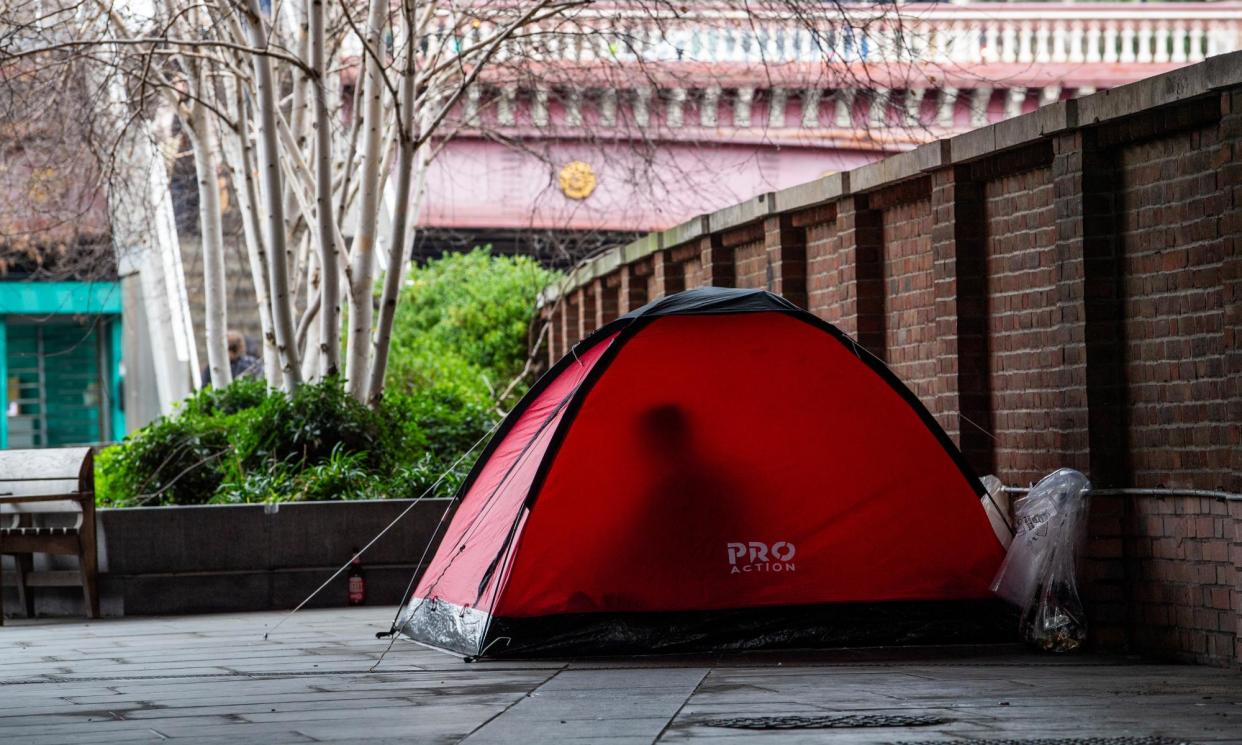Number of people sleeping rough in England rises for second year running

The number of people spending the night on the streets or in tents rose for the second year in a row last year, official figures for England show, meaning the government will fail to meet its manifesto promise to end rough sleeping before the next general election.
An estimated 3,898 people slept rough in 2023, an annual increase of 27% – the largest annual increase since 2015 and more than double (120%) the number of people recorded as sleeping rough in 2010, when records began.
Rough sleeping has increased year on year in every area of England, the figures show, although as usual London, where numbers of rough sleepers rose 32% to 1,132, and the south-east accounted for nearly half of the national total.
The local authorities with the highest numbers of rough sleepers were Westminster (277) and Camden (121) in London, while councils with the largest increases included Ealing (121%), Redbridge (89%) and Leeds (32%).
The government will take some comfort that the 2023 figures represent a decrease of 9% since 2019, and an 18% decrease on 2017, when the highest annual rough sleeping figures of 4,751 were recorded. The government announced £220m of additional funding for homelessness prevention on Wednesday.
The pledge to end the “blight of rough sleeping” was a 2019 general election Tory manifesto promise, given shape in a 2022 strategy backed with £2bn of funding and accompanied by a declaration that government had “a moral imperative to end rough sleeping and to end it for good”.
Annual estimates of rough sleeping are based on a single-night autumn snapshot of people bedding down or about to bed down on the streets, or in tents, doorways or encampments. The estimates do not include people sofa-surfing or in temporary shelters. Charities say the figures underplay the scale of the problem.
Fiona Colley, the director of social change at the charity Homeless Link, said: “Everyone deserves a safe place to live and the support they need to keep it. But this appalling spike in rough sleeping points to a situation that is out of control and demands emergency action.”
Alexia Murphy, the chief executive of youth homelessness charity Depaul UK, said: “Tragically, we are now seeing a return of scenes reminiscent of the 1980s, with rough sleeping strikingly present in towns and cities across the country. As an organisation formed in response to the ‘cardboard city’ crisis, this backward slide is heartbreaking to witness.”
Last month, separate figures collected for London found rough sleeping in the capital was at its highest level in a decade, after a 23% year-on-year increase for the fourth quarter of 2023. It counted 4,389 people sleeping on the streets – the most since city hall started recording figures in 2014.
A Department for Levelling Up, Housing and Communities spokesperson said: “We are now spending an unprecedented £2.4bn to help people at risk of homelessness and support rough sleepers, including £220m announced just yesterday, which will help fund thousands of beds and specialist support services across the country through councils.
“While we have made good progress and rough sleeping remains below pre-pandemic levels, there is more work to be done to meet our ambition to end it entirely and we will continue to work with local authorities to help people off the streets for good.”


